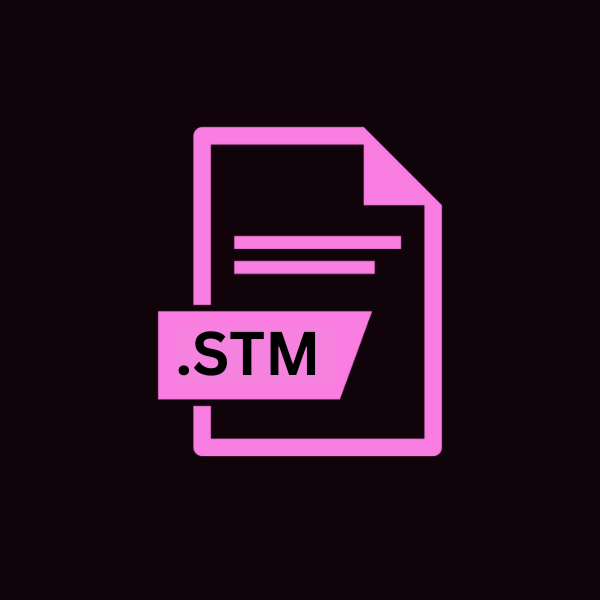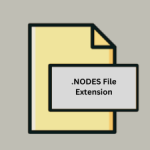.STM File Extension

Scream Tracker 2 Module
| Developer | Future Crew |
| Popularity | |
| Category | Audio Files |
| Format | .STM |
| Cross Platform | Update Soon |
What is an STM file?
The .STM file extension is associated primarily with ‘stream’ files used in conjunction with Microsoft Exchange Server and Microsoft Outlook.
These files typically contain email data, specifically the non-text components of email messages such as multimedia content – images, audio, and video.
Understanding the .STM file is crucial for IT professionals and users who deal with email systems and data recovery.
More Information.
Originally, the .STM file format was part of Microsoft Exchange Server 4.0, released in the late 1990s.
The primary purpose of the .STM file was to store the MIME-formatted content of emails, such as HTML content and attachments, allowing the Exchange Server to handle text (in the EDB file) and multimedia content separately.
This separation improved data access and server performance, especially in environments with heavy email traffic.
Origin Of This File.
The .STM file was introduced as part of Microsoft’s Exchange Server and Outlook email solutions. Designed to work in tandem with the .EDB (Exchange Database) files, the .STM file format was created to optimize the storage of multimedia content separate from the text data stored in the EDB files.
This division of data types aimed to enhance the performance and scalability of the email storage system.
File Structure Technical Specification.
The structure of a .STM file is designed to be a complement to the main Exchange Database (.EDB) file. While the EDB file holds the message headers and text content, the STM file holds the MIME-formatted stream of multimedia content.
This design allows Exchange Server to deliver content more efficiently by loading only the necessary data type – text or multimedia – depending on the client’s request.
How to Convert the File?
Converting .STM files typically involves extracting the content and converting it into a more universally accessible format.
This process is often needed during data migration, backup, or recovery operations. Here’s how you can convert .STM files:
1. Use Specialized Software:
Several third-party software solutions are designed to convert .STM files, often as part of a larger suite of tools for managing Microsoft Exchange Server data.
These tools can convert .STM files into more common formats like .PST (Outlook Personal Folder File), which can then be opened in Microsoft Outlook or other compatible email clients.
Examples of such software include:
- Stellar Converter for EDB: Converts .EDB and .STM files to .PST files, allowing you to open the emails in Microsoft Outlook.
- Kernel for Exchange Server: A recovery and conversion tool for .EDB and .STM files, converting them into .PST, .EML, or .MSG formats.
2. Use Professional Services:
If you’re not comfortable using software tools or if you have a particularly large or complex set of .STM files, professional data recovery or email migration services can help.
These services often have the expertise and tools to ensure that your data is converted accurately and without loss.
3. Manual Conversion (Not Recommended):
Manual conversion involves extracting data directly from the .STM file, which is not straightforward due to the file’s complex structure.
This process typically requires in-depth knowledge of the file format and is not recommended due to the risk of data corruption or loss.
Steps for Using Conversion Software:
While the specific steps can vary depending on the software, the general process for converting .STM files using third-party software is as follows:
- Install and Open the Conversion Software: Download and install the chosen .STM file conversion software on your computer.
- Locate and Load .STM File: Use the software to open and load the .STM file you want to convert. In some cases, you may need to load the associated .EDB file simultaneously.
- Set Conversion Parameters: Choose the output format (.PST, .EML, .MSG, etc.) and specify other options as required by the software.
- Convert and Save: Execute the conversion process and save the output file in the chosen format to your desired location.
- Verify: After conversion, ensure that the data is intact and accessible by opening the converted file in an appropriate application (like Microsoft Outlook for .PST files).
Advantages And Disadvantages.
Advantage:
- Performance Optimization: Separating text and multimedia data allows for quicker data retrieval and server performance.
- Scalability: .STM files help in managing large volumes of data by segregating multimedia content from text, making the system more scalable.
- Data Recovery: In cases of data corruption, having separate files for different types of content can simplify the data recovery process.
Disadvantage:
- Complexity in Management: Handling two separate files for a single email database can complicate backup and recovery processes.
- Potential for Data Inconsistency: If the synchronization between the EDB and STM files is not managed properly, it can lead to data inconsistencies.
How to Open STM?
Open In Windows
- Microsoft Outlook with Exchange Server: If you’re using Microsoft Exchange Server, .STM files should be managed automatically by the server in conjunction with the associated .EDB files.
- Third-Party Tools: For viewing or managing .STM files without Exchange Server, you may use third-party tools like Kernel Exchange Viewer, which can open .STM files and help you view their contents.
Open In Linux
- Use Conversion Tools: Convert .STM files to more universally readable formats using email data conversion tools.
- libpst and Similar Libraries: While primarily for PST files, tools like
libpstmay offer limited support in accessing data from Exchange files.
Open In MAC
- Third-Party Conversion Tools: Use conversion tools designed for Mac to convert .STM files into formats like PST or others that are more accessible on the macOS.
- Professional Services: Consider using professional data recovery or email migration services that support .STM files.
Open In Android
- Convert and Transfer: Convert the .STM files to a different format on a computer, then transfer the converted files to your Android device.
- Use Compatible Apps: Some email management or conversion apps on Android might offer indirect ways to access the content of .STM files after conversion.
Open In IOS
- Convert Then Use: Convert the .STM files using a computer-based tool, then transfer the converted files to your iOS device for access.
- Third-Party Apps: Look for iOS apps that can manage or view converted Exchange Server files.
Open in Others
- Email Migration Tools: Use professional email migration tools that support .STM files to convert or manage these files.
- Data Recovery Services: If accessing data within .STM files is critical, professional data recovery services may provide solutions, ensuring data integrity and accessibility.













